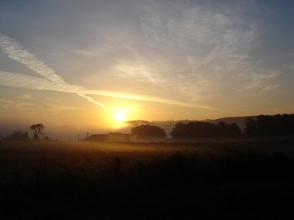InForm Document Layout
An InForm document has a default layout that gives you a starting point as specified by your designer that fits with the framework of your site. However it is possible to add images, video and layouts with a high degree of freedom while still ensuring that it fits with the underlying grid of your design. The rest of this page talks about some of the layouts that are possible.
Layout Examples
A document is broken up into a series of blocks, of which the default form is an unstyled paragraph. The designer will have have specified the dimensions and typography of the page and if you treat the CMS as "a typewriter" then this is the style that you will get. You can apply inline formatting to the text as appropriate.
There is a wide range of alternative block styles available and these can be used at any point in a document. Following this document we have embedded an image, and told the CMS that we want it to be slightly smaller and centered.

Download image (41Kb 800x600 JPEG)
The images that the editor uploads are automatically scaled by the system to fit the document layout. You can also change the document layout to make things appear at different positions and sizes on the screen, and the system will automatically ensure that all assets are presented at the correct resolution without any editorial preparation.
Any image can be zoomable, so if the image to the right is not large enough to see the detail so we make it clickable to see the larger version. This lets you utilise much more detailed images inside a document which would not normally be possible without overwhelming the body text.
Expanding into the margins

Depending on the design chosen, you may well have documents that have margins to the sides. However it is possible to override the defaults and utilise the space outside the margins.
Floated text can be used to annotate or comment on the main body
These layout techniques are not limited to images. The comments to the right of this paragraph is applying it to a block of text to create a pull quote.
The facility to float any content, and to specify the vertical position that it occupies as well as how it behaves within the horizontal grid give a huge amount of flexibility.
If the designer chooses then custom layouts can be registered with dedicated typography and behavior for branding or highlight purposes. Once these are added, then they can then be used on any of the documents throughout the site.
Explicit grid layouts
All of these examples so far have been based on the idea of single flow of content that sits beside or is displaced by content that is floated to either side.
However it is also possible to explicitly construct what size things appear across the entire width of the document.
Embedded youtube video of Humcrush with special guest Sidsel Endresen at The Bimhuis, Amsterdam. Audio from FOH mix by Alex Fiennes.
This row has a completely arbitrary layout within the grid structure of the document. This freedom to easily experiment and let InForm deal with all the background work of preparing assets to fit means that quite a bit of design can be done by the editor within the context of the whole site design.
This level of control is available on all documents on an InForm site regardless of what page type they are found on giving you the ability to fine tune presentation across all elements of your site.
The presentation of the various combinations of typography and layout is entirely customisable by the designer at any point in the lifespan of a site. This extends the life of your content because both it and it's presentation should be preserved across multiple design iterations, while being themed appropriately.